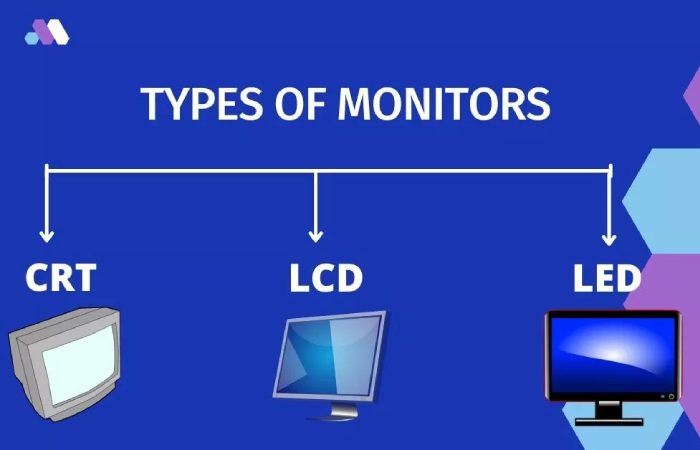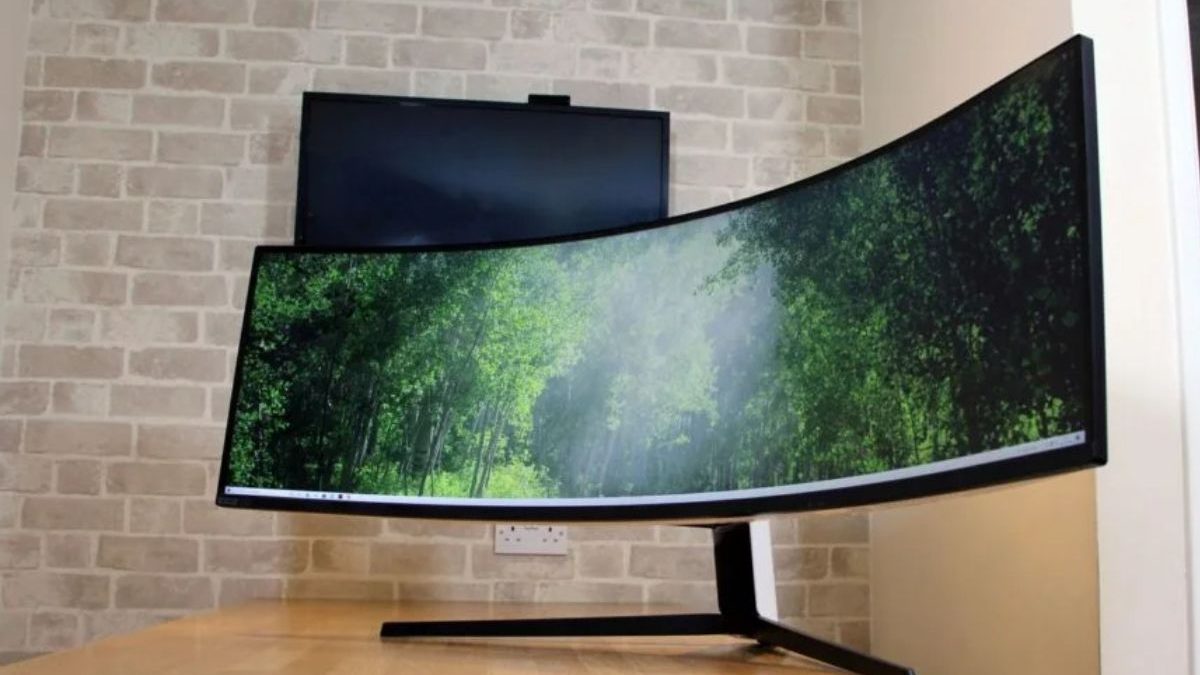Table of Contents
Monitors
monitor is an essential part of a computer system. It is also known as a computer display or screen. Their main function is to provide visual output to their users. Graphical content videos and images are displayed on a monitor
Introduction

There are different display Technologies, sizes, and resolutions of monitors. They offers different features and benefits. The monitor displays the output generated by the computer graphic cards interpreted into videos and images
There are two main types of monitors: Cathode Ray Tube (CRT) monitors, and Liquid Crystal Display (LCD) monitors. CRT monitors were the dominant technology for many years but have been largely replaced by LCD monitors, which are thinner, lighter, and more energy-efficient. LCD monitors use a grid of tiny liquid crystal cells that can be controlled to allow or block light, resulting in the formation of images.
Characteristics of Monitors
Several key specifications characterize monitors:
- Screen Size: Refers to the transverse measurement of the screen in inches. Larger screens provide more viewing areas, allowing for a more immersive experience.
- Resolution: Denotes the number of pixels on the screen horizontally and vertically. Higher resolutions result in sharper and more detailed images.
- Refresh Rate: This represents the number of times the monitor updates the image per second, measured in Hertz (Hz). Higher refresh rates result in smoother motion, making them ideal for gaming or fast-paced content.
- Response Time: Refers to the time it takes for a pixel to transition from one state to another. Lower response times reduce motion blur, ensuring clearer images during fast-moving scenes.
- Connectivity: Monitors offer various connection options, such as HDMI, DisplayPort, DVI, and VGA, to connect to the computer’s graphics card. The available connectivity options depend on the monitor model and the computer’s graphics card.
- Modern monitors often include additional features like built-in speakers, USB ports, and adjustable stands for ergonomic positioning. Some monitors also feature technologies like High Dynamic Range (HDR) for improved color reproduction and contrast.
Types of monitors

There are several types of monitors available in the market. Here are some common types:
- LCD (Liquid Crystal Display): These are the most common type of monitors. They use liquid crystals to display images and are known for their slim design and energy efficiency. LCD offer good color reproduction and are suitable for most general-purpose uses.
- LED (Light-Emitting Diode): LED are LCD monitor that uses LED backlighting instead of traditional cold cathode fluorescent lamps (CCFLs). LED technology offers better contrast, brightness, and energy efficiency than LCD.
- OLED (Organic Light-Emitting Diode): OLED monitors use biological compounds that emit light when an electric current is applied. They offer deep blacks, high contrast ratios, and wide viewing angles. OLED are often found in high-end devices and are known for their superior image quality.
- Curved: Curved monitors have a slight curvature to their display, which aims to provide a more immersive viewing experience. They are designed to match the natural curvature of the human eye and can offer a wider field of view.
Some More Types of Monitors
- Ultra-wide Monitors: Ultra-wide televisions have an aspect ratio wider than the standard 16:9. They provide extra horizontal screen space, making them suitable for multitasking, video editing, gaming, and other applications that benefit from a wider field of view.
- Gaming Monitors: Gaming are specifically designed for gaming enthusiasts. They typically offer high refresh rates (e.g., 144Hz or 240Hz), low response times, adaptive sync technologies (e.g., G-Sync or Free Sync), and advanced color and contrast settings to enhance the gaming experience.
- Touchscreen Monitors: Touchscreen have a built-in touch-sensitive layer, allowing users to interact with the display using their fingers or a stylus. These monitor are commonly used in interactive kiosks. And point-of-sale systems, and other applications that require direct input.
- CRT (Cathode Ray Tube) Monitors: CRT were prevalent in the past but are now less common. They use a large cathode ray tube to display images. CRT are bulky, consume more power, and have limited resolution compared to modern display technologies.
- Portable Monitors: Portable are lightweight and compact, designed for users who need an additional screen while on the go. They are often used with laptop or tablets to extend the display workspace.
These are just some of the common types of monitors available. Each type has its advantage. And is suited for different purposes. so it’s important to consider your specific needs when choosing a monitor.
Conclusion
When choosing a monitor, it’s important to consider the intended use, such as gaming, professional work, or general browsing, as well as factors like budget, desired screen size, resolution requirements, and specific features needed.
Overall, monitors play a crucial role in providing visual output. They are an integral part of the overall computing experience, enabling users to interact with their computers and enjoy multimedia content.


